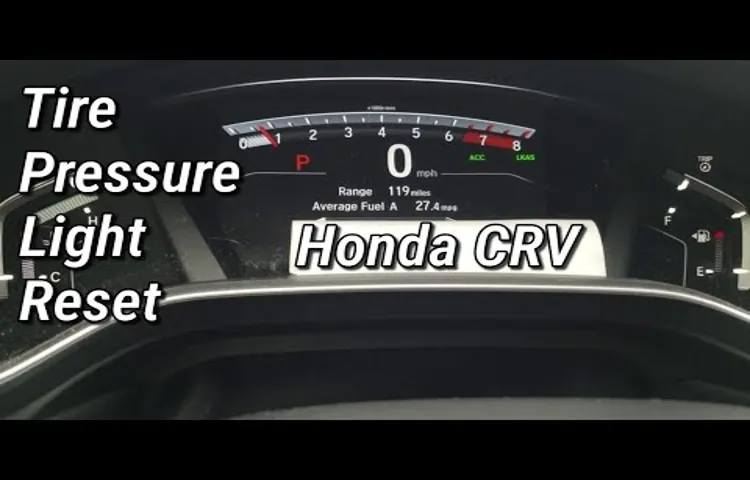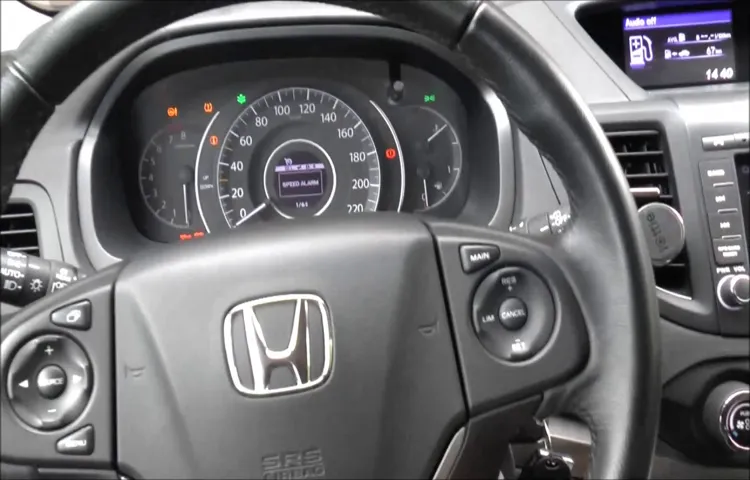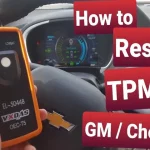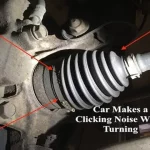Properly maintaining your Honda CR-V is essential for ensuring its longevity and optimal performance. One aspect that is often overlooked is checking the tire pressure. Most vehicle owners underestimate the importance of maintaining the appropriate tire pressure, yet it directly affects their safety and the car’s fuel efficiency.
Checking the tire pressure of your Honda CR-V is an effortless task that can be done at home or at a gas station with an air compressor. However, with the abundance of online resources, it can be challenging to know where to start. In this blog, we will provide you with a comprehensive guide on how to check the tire pressure of your Honda CR-V so that you can enjoy a smoother and safer driving experience.
Besides, we will also discuss the benefits of having the correct tire pressure and the negative impacts of having overinflated or underinflated tires. You will learn how to identify tire pressure issues and fix them to ensure that your Honda CR-V tires are always in tip-top condition. So strap in and let’s get started.
Table of Contents
Why It’s Important to Check Tire Pressure
If you want to keep your Honda CRV in prime condition, it’s essential to check the tire pressure regularly. Not only does maintaining proper tire pressure extend the life of your tires, but it also ensures your safety on the road. To check the tire pressure on your Honda CRV, start by finding the recommended pressure in the owner’s manual or on the sticker inside the driver’s side door.
Next, remove the valve cap on the tire, and place a tire pressure gauge onto the valve stem. The gauge will indicate the current pressure, and you can compare it to the recommended pressure. If the pressure is too low, use an air compressor to add more air.
If the pressure is too high, release some air until it’s at the recommended level. Be sure to check all four tires and the spare tire, as they can lose air over time. Taking the time to check your tire pressure regularly can save you from costly repairs and potentially dangerous situations down the road.
Safety: Preventing Accidents and Blowouts
As a driver, it’s essential to check your tire pressure regularly to ensure safety and prevent accidents while driving. Low tire pressure can lead to a range of issues, including decreased fuel efficiency, poor handling, and even blowouts. Imagine driving on a bike with a flat tire; the effort required to pedal, the bike’s control, and the ability to stop all become difficult.
The same goes for your car. When your car’s tires have low pressure, it becomes difficult to steer, brake, and even accelerate, making it challenging to control the vehicle. This is why making sure your tires have the correct pressure is so important.
Checking tire pressure is quick and easy and can even be done at home with a handheld tire pressure gauge. It’s much better to invest a little time in checking your tire pressure than having to deal with a blown-out tire on the road, endangering yourself and others. By staying on top of your car’s maintenance, such as checking tire pressure regularly, you can protect yourself and your loved ones while on the road.

Savings: Improving Gas Mileage and Tire Longevity
Checking tire pressure regularly is critical in improving gas mileage, extending tire lifespan, and preventing accidents. When your tires are underinflated, more heat is generated due to the increased rolling resistance, causing them to wear out faster and reducing fuel economy. However, overinflated tires also cause rapid tread wear and an uneven contact patch, affecting your vehicle’s handling, braking, and stability.
It’s essential to follow the manufacturer’s recommended tire pressure, using a reliable pressure gauge and checking when your tires are cold. Moreover, using the appropriate tire type for your car and maintaining the correct alignment and rotation schedule can save you money while ensuring your safety on the road. Don’t overlook the importance of tire pressure in your vehicle’s performance and overall savings potential.
It’s a small task that can lead to significant benefits.
Gather the Tools You Need
When it comes to checking the tire pressure of your Honda CRV, having the right tools is important. You will need a tire pressure gauge, which can be purchased at most automotive stores or online retailers. It’s also a good idea to have a tire inflator or air compressor on hand, in case any tires need to be inflated.
These can also be found at automotive stores or online. Once you have these tools, you can easily check and maintain the tire pressure of your Honda CRV on a regular basis. Remember, proper tire pressure not only helps with fuel efficiency, but also ensures the safety and longevity of your tires.
So, gather the tools you need and make tire pressure checks a part of your regular maintenance routine.
Tire Pressure Gauge
When it comes to checking your tire pressure, having a reliable tire pressure gauge is crucial. It’s a simple tool that can save you from accidents and prolong the life of your tires. Before you start checking your tire pressure, gather the tools you’ll need.
In addition to a tire pressure gauge, you’ll need a tire chuck and an air compressor, or a tire inflator that comes with a built-in gauge. There are different types of tire pressure gauges, including digital and analog ones. Choose the one that you’re comfortable using and that fits your budget.
Some tire pressure gauges come with a bleeder valve that allows you to release excess air from the tires, while others don’t have this feature. Keep in mind that an accurate tire pressure gauge is useless if it’s not calibrated regularly. Check its accuracy against a reference gauge or the one at your gas station.
Remember that tire pressure should be checked at least once a month and before long road trips, or when the temperature changes. By doing so, you’ll ensure that your tires are properly inflated and that you’re driving safely.
Inflation Data
Inflation data can be quite complex and overwhelming for novice investors. However, with the right tools, gathering and analyzing this data can be a breeze. One of the most important tools you’ll need is an inflation calculator, which will give you a better understanding of how much purchasing power has changed over time.
You’ll also need to monitor current inflation rates, which can be found on government websites or through financial news sources. Keeping up with economic indicators like the Consumer Price Index (CPI) and the Producer Price Index (PPI) can also provide valuable insights into inflation trends. Additionally, it’s important to consider the impact of inflation on investment returns and adjust your portfolio accordingly.
With the proper tools and knowledge, even those new to investing can stay ahead of inflation and make informed decisions for their financial future.
Guide to Checking Tire Pressure
If you own a Honda CRV, checking your tire pressure is essential to maintaining optimal vehicle performance and safety. To start, ensure that you have a tire pressure gauge on hand, which can be purchased at any auto parts store. Before checking the tire pressure, make sure that your tires are cool and that the vehicle has been parked for at least three hours.
Remove the valve cap from the tire and insert the tire pressure gauge into the valve stem. The gauge will provide a reading of the tire pressure, which should match the recommended pressure listed in the owner’s manual or on the inside of the driver’s side door. If the pressure is too low, inflate the tire to the recommended pressure using an air compressor or tire inflator.
Conversely, if the pressure is too high, release some air until it reaches the recommended pressure. Remember to check all four tires regularly, as tire pressure can fluctuate due to changes in temperature and usage. Maintaining proper tire pressure not only promotes good fuel economy, but it also helps to prevent tire damage and accidents on the road.
Make it a habit to check your Honda CRV’s tire pressure regularly, and you’ll ensure a smooth and safe driving experience.
Park Your Car on a Level and Safe Place
When it comes to checking tire pressure, there are a few key steps you should follow to ensure your safety on the road. First and foremost, make sure you park your car on a level and safe surface. This will give you the most accurate reading of your tire pressure.
Once your car is parked, locate your tire pressure gauge and remove the cap from your tire valve stem. Press the gauge firmly onto the valve stem, ensuring a tight seal. You’ll hear a hissing sound indicating that air is flowing into the gauge.
Once the gauge has stopped moving, remove it and check the reading. If your tire pressure is too low or too high, inflate or deflate your tires accordingly. Keeping your tires properly inflated not only ensures your safety but also helps to improve fuel efficiency and tire lifespan.
So, make it a habit to check your tire pressure at least once a month to keep your car running smoothly on the road.
Locate the Tire Pressure Label
Checking Tire Pressure When it comes to car maintenance, checking your tire pressure regularly is essential for both your safety and your vehicle’s optimal performance. The first step to doing so is to locate the tire pressure label, which is typically found inside the driver’s side door jamb or in the glove compartment. The label provides the recommended pressure for your vehicle’s specific make and model, usually listed in PSI (pounds per square inch).
Once you have located the label, use a tire pressure gauge to measure the air pressure in each tire. If the pressure is low, add air until you reach the recommended PSI. Overinflated tires can be just as dangerous as low-pressure ones, so it’s important not to exceed the recommended pressure.
By checking your tire pressure regularly, you can improve your vehicle’s fuel efficiency, extend the life of your tires, and keep yourself and your passengers safe on the road.
Remove the Valve Cap and Attach the Gauge to Valve Stem
When it comes to maintaining your vehicle, checking tire pressure is an essential task that should never be overlooked. To do so, start by removing the valve cap from the tire and attaching the gauge to the valve stem. Once attached, you should hear a hissing sound, which means that the gauge is reading the current pressure of the tire.
The reading will show on the gauge, and you can then compare it to the recommended pressure for your particular tire, which can typically be found in the owner’s manual or on a sticker inside the driver’s door. If the reading is lower than the recommended pressure, you will need to add air to the tire until it reaches the correct level. If it’s higher than the recommended pressure, you will need to release some air until it reaches the correct level.
With regular checks, you can ensure that your tires are properly inflated, which will improve gas mileage, extend tire life, and keep you safe on the road.
Check the Reading and Compare to Inflation Data
Checking tire pressure is an essential part of maintaining your vehicle’s safety and overall performance. Not only does it improve fuel efficiency, but it also helps prevent tire damage and prolongs their lifespan. Keep in mind that the recommended tire pressure can vary depending on the make and model of your car, so always refer to your owner’s manual.
It’s crucial to check your tire pressure regularly, especially before long road trips, and compare it to inflation data. Just like how inflation affects the value of money, temperature changes, and time can cause fluctuations in tire pressure. So, it’s best to keep a tire pressure gauge handy and check your tires every month or so to ensure they are properly inflated.
Remember, maintaining your tires is an investment in your safety and your wallet in the long run.
Adjust the Tire Pressure and Repeat on All Four Tires
When it comes to proper maintenance of your vehicle, checking tire pressure regularly should be at the top of your priority list. Not only does proper tire pressure ensure your car handles correctly, but it can also help improve fuel economy and extend the overall life of your tires. To begin checking your tire pressure, first, locate the recommended tire pressure in your owner’s manual or on the tire information placard located on the driver’s side doorjamb.
Use a tire pressure gauge to measure the current pressure, and if the pressure is too low or high, add or remove air as necessary. It’s essential to remember to adjust the tire pressure on all four tires, not just the one that seems to be the issue. Uneven tire pressure can lead to handling difficulties, so take the time to make sure all four tires have the correct pressure.
By following these simple steps, you can help keep yourself and your vehicle on the road safely.
Final Thoughts
Checking the tire pressure of your Honda CR-V is easy and important to maintain proper tire performance and prolong their lifespan. Start by visually inspecting each tire for any signs of damage or uneven wear. Then, locate the tire pressure monitoring system (TPMS) button near the steering wheel.
Turn on your ignition and press and hold the TPMS button until the light blinks. This will activate the system and display the current tire pressure for all four tires on your dashboard. Use a tire gauge to check the pressure of each tire against the recommended PSI found in your owner’s manual or on the tire information placard inside the driver’s side doorjamb.
If the pressure is too low, add air until the specified PSI is reached. Repeat the process for each tire and don’t forget to check the spare tire too. By regularly checking your tire pressure, you can improve your Honda CR-V’s handling, fuel efficiency, and safety on the road.
Regularly Check Tire Pressure
Regularly checking your tire pressure is a crucial aspect of maintaining your vehicle’s health and safety. As you do this, you can identify some underlying problems such as air leaks, which can result in blowouts or blow-offs while in motion. It’s essential to keep in mind that tire pressure can fluctuate throughout the year, depending on temperature changes and other external factors.
Low tire pressure can cause fuel inefficiency, tire wear, and tear, while overinflated tires can lead to reduced grip and stability on the road. Maintaining appropriate tire pressure keeps your car’s fuel efficiency high and reduces the risk of tire damage, giving you a comfortable and secure driving experience. Therefore, make it a habit to check your tire pressure once a month or before any long road trips to ensure optimal performance and safety.
Don’t Overinflate or Underinflate Your Tires
Overinflating or underinflating your tires can have serious consequences on your vehicle’s performance and safety. When your tires are not inflated to the proper level, it affects your vehicle’s handling, fuel efficiency, and can even cause your tires to wear unevenly. Overinflation can cause your tires to become too rigid, which leads to reduced traction and a bumpy ride, while underinflation can result in increased friction and heat buildup, which can lead to blowouts.
Therefore, it’s essential to make sure your tires are inflated to the manufacturer’s recommended levels. This simple step can make a significant difference in your vehicle’s overall performance and keep you safe on the road. Remember, your tires are the only point of contact between your vehicle and the road, so keeping them properly inflated is crucial.
Conclusion
So, there you have it, folks – checking your tire pressure on your Honda CR-V is actually pretty easy! All it takes is a reliable tire pressure gauge, a little bit of time, and the patience to ensure that each tire is properly inflated to the correct pressure. By following these simple steps, you’ll not only be improving your car’s handling and fuel efficiency, but you’ll also be ensuring that your next road trip is as smooth and comfortable as possible. So, next time you’re hitting the road in your trusty CR-V, don’t forget to check those tire pressures – your car (and your wallet) will thank you in the long run!”
FAQs
Why is it important to check tire pressure on a Honda CRV?
Checking tire pressure on a Honda CRV is important because it ensures that the car is running at its optimal level, helps prevent accidents, and extends the life of the tires.
How often should you check the tire pressure on a Honda CRV?
You should check the tire pressure on a Honda CRV at least once a month or before a long trip.
What is the ideal tire pressure for a Honda CRV?
The ideal tire pressure for a Honda CRV is 32 PSI (pounds per square inch) for the front tires and 30 PSI for the rear tires.
Can you use a regular tire pressure gauge on a Honda CRV?
Yes, you can use a regular tire pressure gauge on a Honda CRV, as long as it fits the valve stems and can accurately read the pressure.
How do you check the tire pressure on a Honda CRV?
To check the tire pressure on a Honda CRV, first, make sure the tires are cold. Then, remove the valve cap and attach the tire pressure gauge to the valve stem. Read the pressure on the gauge, compare it to the recommended pressure, and adjust if necessary.
What happens if the tire pressure on a Honda CRV is too low?
If the tire pressure on a Honda CRV is too low, it can cause poor fuel economy, premature tire wear, and tire failure, which can lead to accidents.
What if the tire pressure on a Honda CRV is too high?
If the tire pressure on a Honda CRV is too high, it can cause a harsh ride, uneven tire wear, and reduced traction, which can also lead to accidents.



